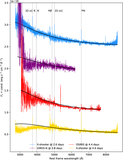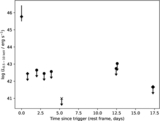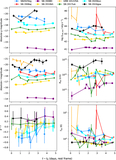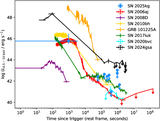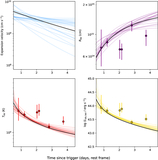Image Details
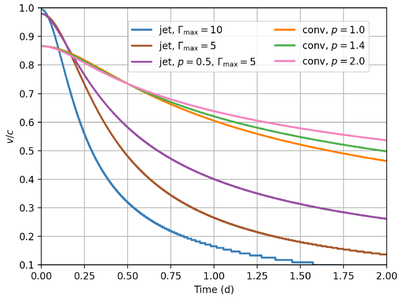
Caption: Figure 11.
Model photospheric velocity of the shock breakout/interaction models from Figure 10. The high mass in the convective-engine models causes them to decelerate slowly, arguing for a high-velocity photosphere in the first 2 days. The lower mass in the jet-driven explosions leads to rapid deceleration of the photosphere.
Copyright and Terms & Conditions
© 2025. The Author(s). Published by the American Astronomical Society.





